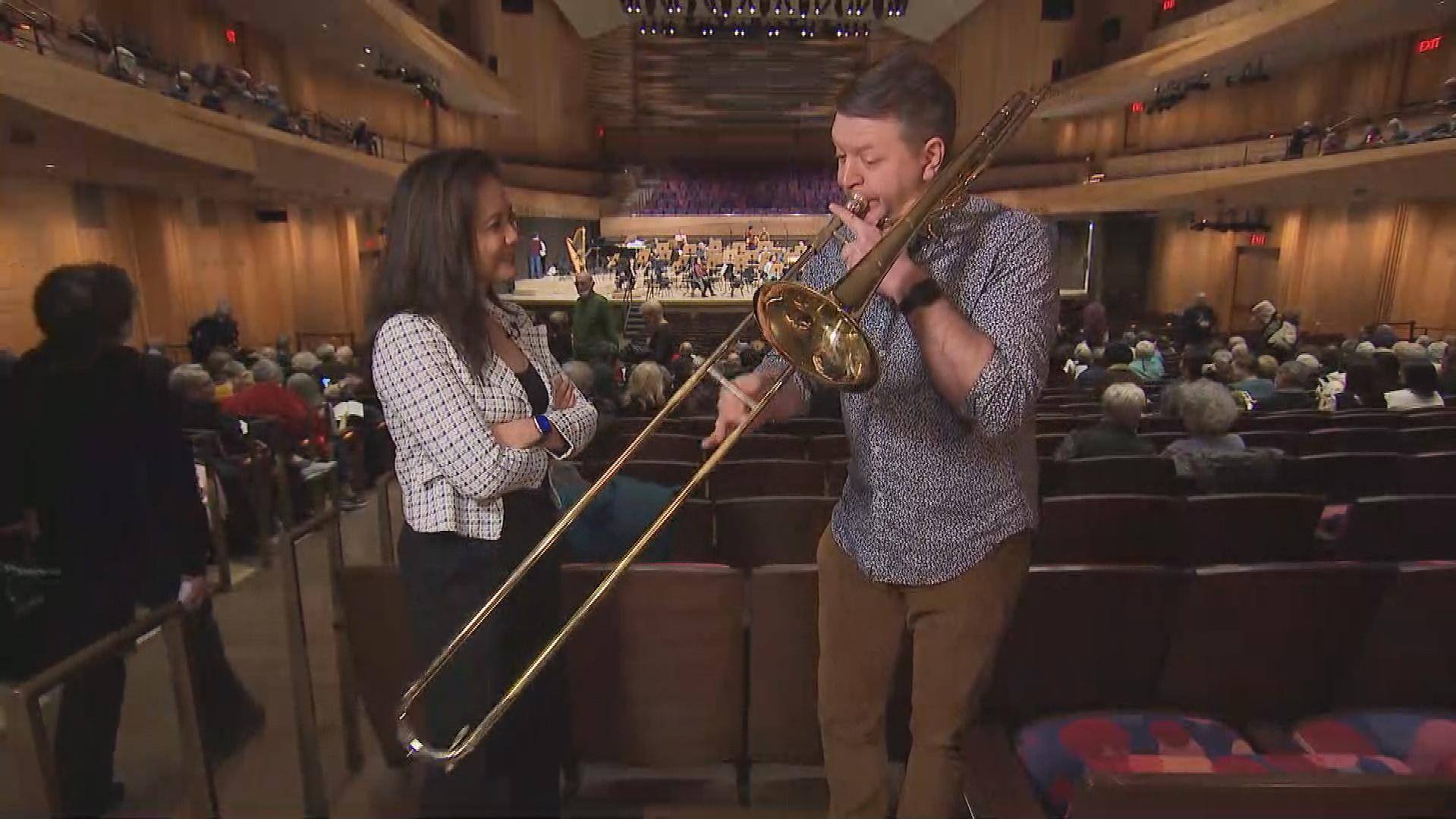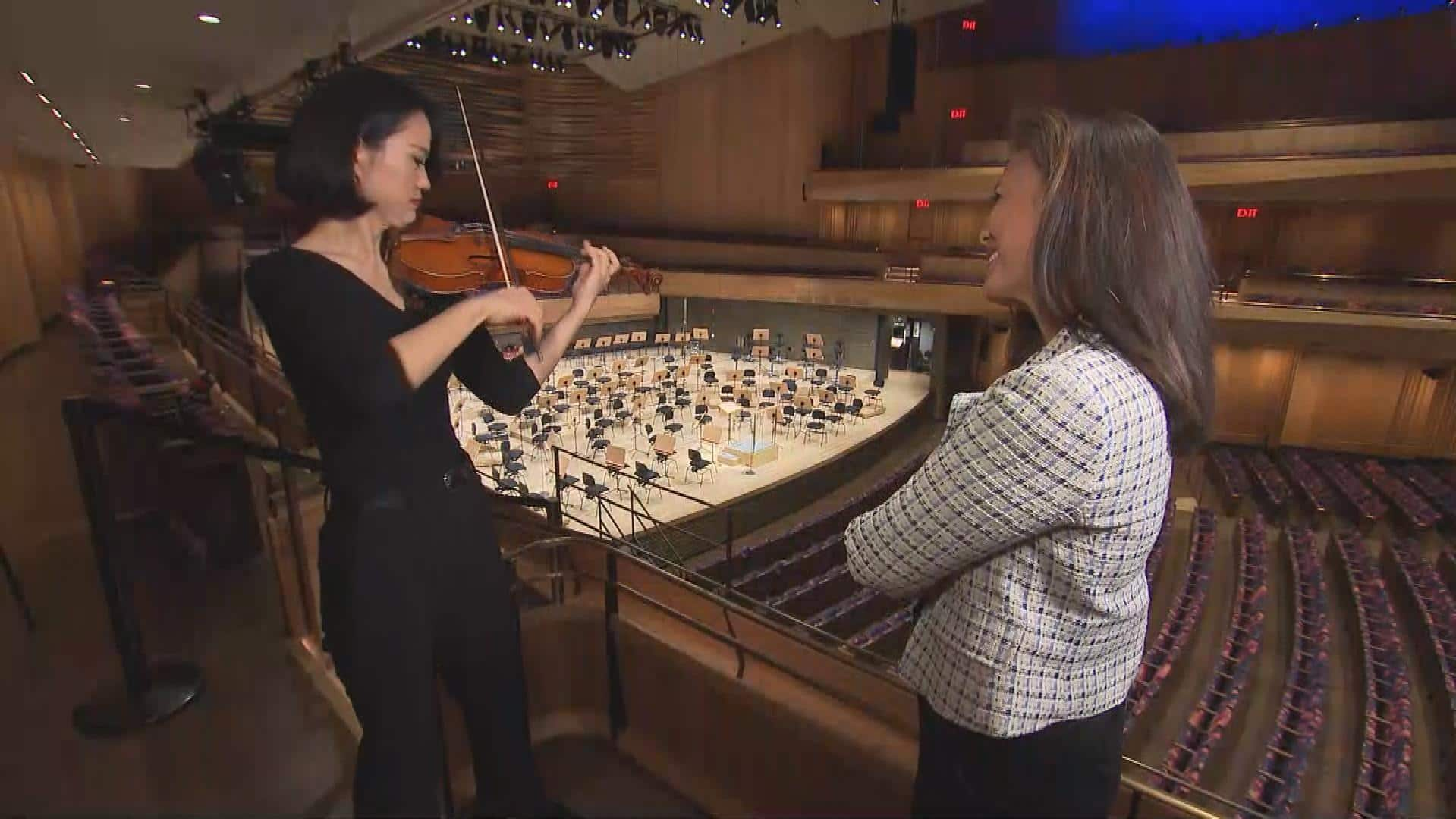There's a Canadian signature on a beam of one of New York City's most iconic buildings: the newly revamped David Geffen Hall at Lincoln Center for the Performing Arts, home to the New York Philharmonic.
Gary McCluskie, a principal architect with Toronto-based Diamond Schmitt Architects, can show you exactly where the signature is. He put it there himself in the final stages of a $550-million US renovation that his team helped complete before the hall reopened last October.
It was a moment of pride for McCluskie after a long journey that began with a call in 2016 asking the Canadian team to solve a notorious problem in the cultural heart of the United States — namely, one of its greatest concert halls had a reputation for terrible sound.
"The challenge of Geffen Hall was that the acoustic of the hall was never great, and it never matched the greatness of the orchestra," McCluskie said.
The acoustics were so terrible that some started to call it a curse after two expensive renovations failed to fix the issue.
The problem, according to the New York Philharmonic's current CEO, Deborah Borda, was evident from the moment the hall opened in 1962. (It was originally called Philharmonic Hall, followed by Avery Fisher Hall in honour of a philanthropist who donated $10.5 million in 1973. In 2015, it was named after entertainment mogul David Geffen, who donated $100 million as part of a fundraising campaign and won the naming rights.)
"It actually looked beautiful on the inside. Max Abramovitz was the architect," Borda said. "The problem was, you couldn't hear. Everybody knew right away. The sound was no good from the orchestra, and the orchestra [members] couldn't hear each other on the stage."

Diamond Schmitt landed the coveted contract to redesign the hall and once and for all fix a problem that's plagued it for decades.
The new concert hall kicked off its 2022-23 season last fall, and by all accounts, the so-called curse has been lifted. Patrons, musicians and critics offered rave reviews.
The New York Times called the sound "glistening and lucid," and the Washington Post described the experience "as if you're inside the body of an instrument."

Fixing the sound
Colin Williams, an associate principal trombonist, joined the New York Philharmonic in 2014. When he heard about the latest attempt to fix the problem, he held his breath.
"Oh my God, please let them lift the curse this time," he said. He was tired of the tinny quality of the old hall, which flattened the sound of a world-renowned orchestra. He lamented how much better he sounded in other great halls he's played in Europe and Asia.
Williams said the difference the renovation has made is like going from black and white to colour.

"A lot of these sounds would kind of blend together," he said. Now, "there's so much more warmth to the sound. Now, there's clarity."
Diamond Schmitt worked with Connecticut-based firm Akustiks, theatre designers Fisher Dachs Associates and New York-based architecture firm Tod Williams Billie Tsien.
Together, they were on a mission to redesign the space in service of sound — from the building materials to the textiles to the shape of the hall.

"Perhaps the most significant change was to move the orchestra," said Paul Scarborough, a lead designer with Akustiks. "We pulled the stage 25 feet out into the room to bring everybody closer to what was happening on stage."
Gone was the more traditional shoebox interior, which had a proscenium-style stage that created a clear divide between the performers and the audience.
With 500 seats removed — bringing the hall down to 2,200 — Diamond Schmitt created a vineyard-type seating arrangement with plenty of curves to allow the audience to wrap around the stage. There's even an entire section of seats behind the performers.

"That idea of a surround experience would be a fundamental change in how the audience experiences the music," McCluskie said, "but also create the opportunity to really, really greatly improve the quality of that sound."
He pointed to the combination of bronze materials and warm textiles, the beechwood panels and walnut seats all chosen to complement or enhance sound. There is an instant feeling in the room, as the Washington Post described, of being inside a musical instrument.
"So [with] every material, we really think of how it'll work together as an ensemble, how it'll work together in a co-ordinated way to create a feeling in the room," McCluskie said.
More than just sound
While getting the sound of the orchestral hall right was a heavy lift, the architects and designers also had to contend with another problem in the Lincoln Center's history.
In order to create a massive centre for New York's ballet, opera and orchestra back in the 1960s, the city had to demolish a vibrant Black and Puerto Rican neighbourhood on Manhattan's Upper West Side. The redesign of David Geffen Hall aimed to address that injustice.
To start, the social spaces outside the concert hall were opened up by creating a clear path from the outside plaza to the inside lobby that's open all day to the public. The space has a café and massive screens that livestream concerts for free. There's also a new performance area that's visible from the outside, called the Sidewalk Studio.
"What we're saying to the city of New York is, 'Come in, we welcome you,'" architect Billie Tsien said at the unveiling of the project's plans three years ago.
As McCluskie tells it, there's almost a symphonic quality to the way the project began and then wrapped up with the grand finale speeding through a pandemic.
He said he'll never forget the moment he got the call, on a spring day in 2016, after a long bidding process for the project. "It's an icon of 20th-century architecture in North America and in the world. So it was the project of a lifetime."
For Diamond Schmitt's team, the project has been a crown on a prestigious resumé that helped them land the Lincoln Center job in the first place. Their work includes redesigning the Four Seasons Centre for the Performing Arts in Toronto, Maison Symphonique in Montreal and the National Arts Centre in Ottawa.
"Just that opportunity to take our know-how that we've developed in Canada and bring it to the world is a real point of pride for us," McCluskie said.
Hence, the Canadian signature in David Geffen Hall, hidden beneath a ceiling, of a giant maple leaf.

Getting it done
There were concerns that the COVID-19 pandemic would stall the project, but powered with Geffen's $100-million donation, the renovation ramped up during the lockdown period. It was completed on time and under budget.
At the ribbon cutting on Oct. 8, New York Gov. Kathy Hochul expressed great pride in the project's completion.
"People will look back at this and say this was our age of awesome," she said. "People will look back and say you were the patrons, the visionaries, the people who said, 'We can do this.'"

That feeling of we did this really landed at a top-secret rehearsal last summer attended by the project's executives, donors, designers, musicians and McCluskie's team. The very first notes of Anton Bruckner's Symphony No. 7 in E Major gave them the answer they were looking for.
"If you listen to that piece of music, the way it starts quietly and gently with the strings, and then the rest of the orchestra builds on [it] ... the quality of that sound enlarges in the space," McCluskie said. "You could hear all of that in the first three minutes."
He said everyone in attendance that day was in tears.
For Colin Williams and the other members of the New York Philharmonic, the new space means a rightful home for the music.
"Maybe every 50 to 60 years, an orchestra has a transformation like this," he said. "To be part of this reimagining, not only of the space but of the sound of the orchestra, it's an incredible thing."

For Borda, the project's fruition completes a personal journey. She actually left the New York Philharmonic in the 1990s, frustrated by the failed renovations. She spent decades in California as head of the Los Angeles Philharmonic, where she worked with another famed Canadian-born architect, Frank Gehry, on the Walt Disney Concert Hall.
Borda was called back to New York when the Lincoln Center project got the funding for the revamp.
"I rarely say this: I've been in this business a long time. This turned out beyond my expectations," she said.
















